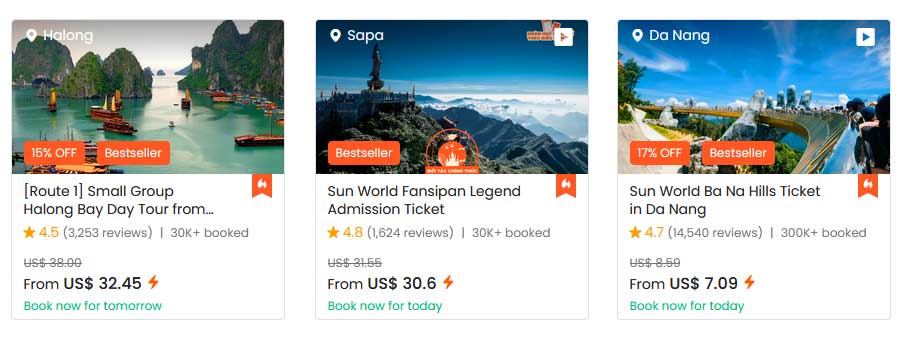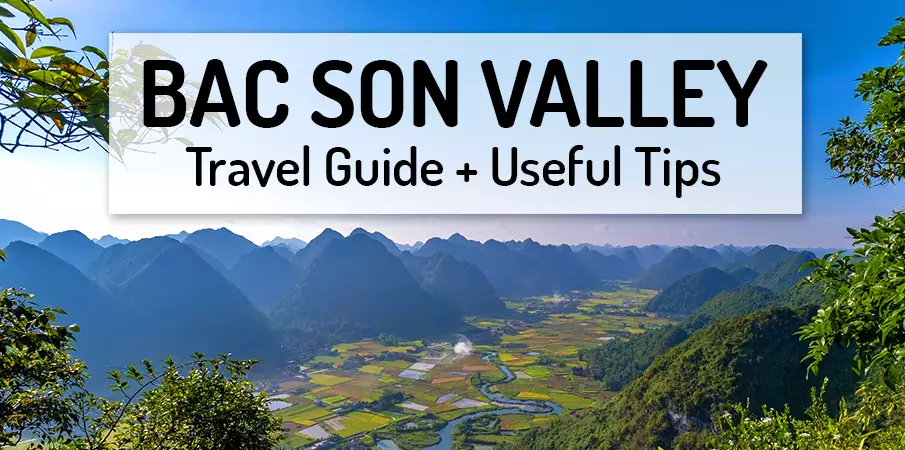
ℹ️ Information – Bac Son
🚍 How to get to Bac Son
☀️ Weather in Bac Son
🏡 Where to stay in Bac Son
🔍 Sightseeing in Bac Son
❓ FAQ + Travel Tips + Info
🎫 Tickets in Vietnam
Bac Son Valley in Vietnam: A Lush Haven of Tranquility.
Nestled in the heart of northern Vietnam, Bac Son Valley is a hidden gem that beckons to travelers seeking respite from the hustle and bustle of city life. This pristine valley, located in the Lang Son province, is known for its breathtaking natural beauty, idyllic rural landscapes, and the warmth of its people. As we embark on a journey through Bac Son Valley, we will explore its rich history, unique geography, captivating culture, and the multitude of activities that make it a destination worth exploring.
Geography and Landscape of Bac Son Valley:
-
- Bac Son Valley is located approximately 160 kilometers northeast of Hanoi, the capital of Vietnam, Lang Son province. The valley is a picturesque expanse of lush rice paddies, winding rivers, and limestone mountains that reach towards the heavens. It is situated within the greater Northeast region of Vietnam, characterized by its subtropical climate and mountainous terrain.
- One of the valley’s most iconic features is the towering limestone karsts that dominate the horizon. These rocky formations, covered in lush green vegetation, create a stunning contrast against the emerald green rice fields and the meandering rivers, providing photographers and nature enthusiasts with endless opportunities for capturing the valley’s natural beauty.
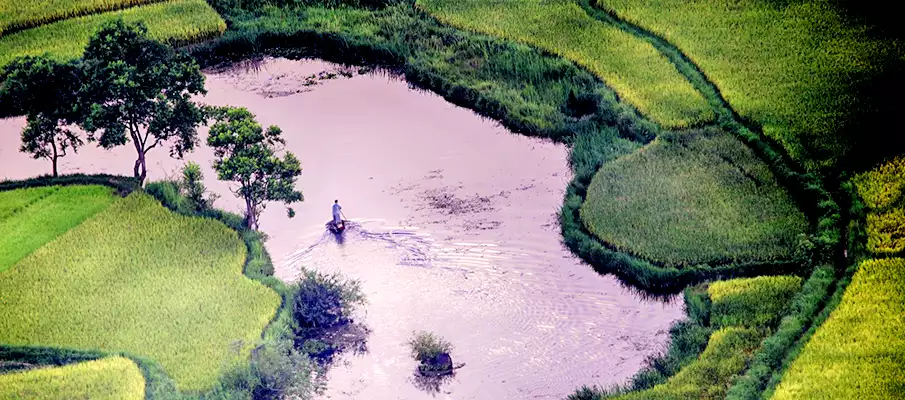
Cultural Heritage of Bac Son Valley in Vietnam:
The cultural heritage of Bac Son Valley is as rich and diverse as its stunning natural landscape. The valley is predominantly inhabited by the Tay ethnic group, and their customs, traditions, and way of life play a pivotal role in shaping the cultural tapestry of the region. Here, we delve deeper into the cultural heritage of Bac Son Valley.
-
- Traditional Stilt Houses: The Tay people of Bac Son Valley live in distinctive traditional stilt houses made from locally sourced materials such as wood and bamboo. These houses are elevated on wooden pillars to protect against flooding during the rainy season. Inside, the houses are divided into separate sections for various purposes, including living, cooking, and storage. Visitors to Bac Son Valley often have the opportunity to stay in these stilt houses, providing a unique cultural experience.
- Clothing and Textiles: The Tay people are known for their traditional clothing, which is both beautiful and symbolic. Women often wear vibrant, handwoven skirts and intricately embroidered blouses, while men typically don dark-colored clothing. The art of textile production and embroidery is a cherished tradition passed down through generations. Visitors can witness the process of weaving and purchase handmade textiles as souvenirs.
- Festivals and Ceremonies: The Tay people celebrate a variety of festivals and ceremonies throughout the year. One of the most significant is the Long Tong Festival, which takes place during the Tet holiday (Lunar New Year). During this time, the community gathers to pray for a prosperous and bountiful year. Traditional rituals, dancing, and games are an integral part of these celebrations, and visitors are often welcome to participate and experience the festive spirit.
- Traditional Cuisine: The Tay people have a unique culinary heritage that revolves around locally sourced ingredients. Sticky rice, various vegetables, freshwater fish, and wild herbs are commonly used in their dishes. One of the most famous delicacies in Bac Son Valley is „com lam,“ a dish of sticky rice cooked in bamboo tubes. Additionally, visitors can savor traditional dishes like grilled fish and wild forest vegetables, providing a taste of the region’s culinary culture.
- Language and Folklore: The Tay people have their own language, which is part of the Tai-Kadai language family. While many Tay people are bilingual in Vietnamese, their native language is still spoken and preserved. Folklore and legends are also an essential part of their culture. Stories, myths, and legends are often shared through oral tradition, conveying valuable lessons and the cultural history of the Tay people.
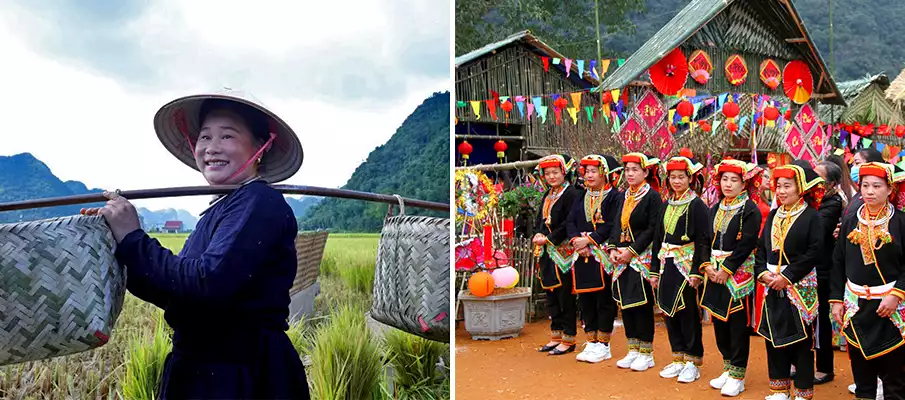
Historical Significance of Bac Son Valley:
Bac Son Valley, beyond its natural and cultural beauty, has a notable historical significance that is intertwined with various chapters of Vietnam’s past. Here are some key historical aspects that have left their mark on this enchanting valley:
-
- Tay Son Rebellion: Bac Son Valley was a central hub during the Tay Son Rebellion, one of the most significant uprisings in Vietnamese history. The Tay Son brothers, Nguyen Nhac, Nguyen Hue, and Nguyen Lu, led this rebellion against the ruling Le Dynasty and the growing influence of the Nguyen Lords in the 18th century. The valley’s strategic location amidst limestone karsts made it an ideal stronghold for the Tay Son forces. The rebellion ultimately succeeded, leading to the establishment of the Tay Son Dynasty for a brief period before the Nguyen Lords regained control.
- Tay Son and the French Colonial Period: The French colonial period in Vietnam had a profound impact on the country’s history, and Bac Son Valley played a role in this struggle. The region served as a refuge for anti-colonial resistance groups, including the communist-led Viet Minh, who sought to fight against French colonial rule. The limestone caves and tunnels of the valley provided excellent hiding places and bases for the resistance. The Tay Son Caves, in particular, were used by revolutionary forces to evade the French authorities.
- Historical Temples and Pagodas: Bac Son Valley is home to several ancient temples and pagodas that carry historical significance. One of the most prominent is the Tay Son Pagoda, located on a hill overlooking the valley. This pagoda is associated with the Tay Son Rebellion and the Tay Son Dynasty. Visitors can explore these temples and gain insights into the historical events and spiritual practices of the region.
- Ethnic Traditions and Heritage: The Tay people, who have inhabited Bac Son Valley for generations, have preserved their cultural and historical heritage. Traditional practices, clothing, and architecture reflect their deep connection to the land and the historical events that shaped the valley. Visitors can engage with local communities and gain a deeper understanding of the region’s historical significance through storytelling and traditional practices.
- Cultural Exchange and Understanding: Bac Son Valley’s rich history and its role in the various historical events of Vietnam provide a unique opportunity for cultural exchange and understanding. Tourists can learn about the impact of the Tay Son Rebellion, the struggles of the Viet Minh, and the resilience of the local people in the face of these events. This knowledge helps visitors appreciate the cultural heritage of the region in a broader historical context.
BOOK A TOUR / ACTIVITY in Vietnam ➜
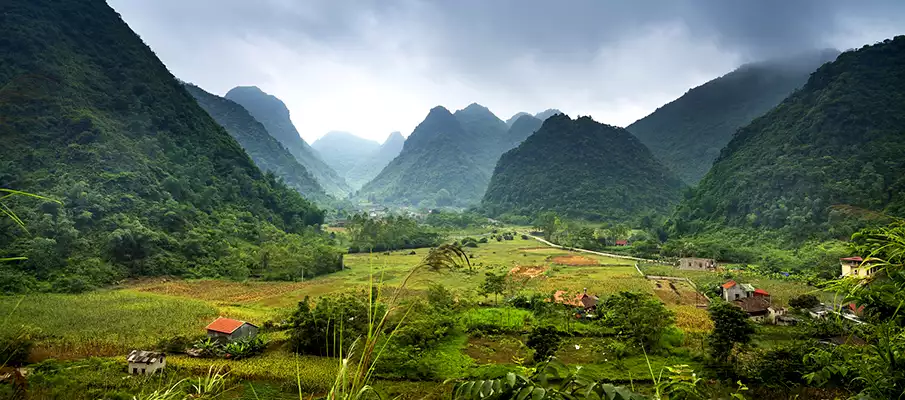
How to move in Bac Son Valley?
Moving around Bac Son Valley is a delightful adventure in itself, offering various transportation options that cater to different preferences and travel styles. Here are the main transportation choices for exploring Bac Son Valley:
-
- Walking and Biking: One of the best ways to experience the beauty of Bac Son Valley up close is by walking or cycling. The valley’s flat terrain and well-maintained trails make it ideal for leisurely walks or bike rides. Many accommodations offer bicycle rentals, allowing you to explore the valley at your own pace and immerse yourself in the tranquil surroundings.
- Motorbikes and Scooters: Renting a motorbike or scooter is a convenient and popular choice for getting around Bac Son Valley. It provides the flexibility to visit various points of interest and explore the nearby villages and scenic spots. However, it’s essential to exercise caution and ensure you have the necessary permits if required.
- Homestay and Lodge Arrangements: Many accommodations in Bac Son Valley offer transportation services for their guests. They can arrange for pick-ups from nearby towns or the Hanoi Airport, making your journey to the valley convenient and hassle-free. You can inquire about transportation services when booking your stay.
- Local Buses and Mini-Buses: Local buses and mini-buses serve the Bac Son area, connecting you to nearby towns and villages. While these are cost-effective options, they may not always run on a strict schedule, so it’s essential to plan your trips accordingly.
- Private Tours and Guides: For a more tailored and informative experience, consider hiring a local guide or joining a private tour. A local guide can navigate the region’s terrain and provide insights into the culture and history of Bac Son Valley. Private tours can be customized to your interests and may include transportation.
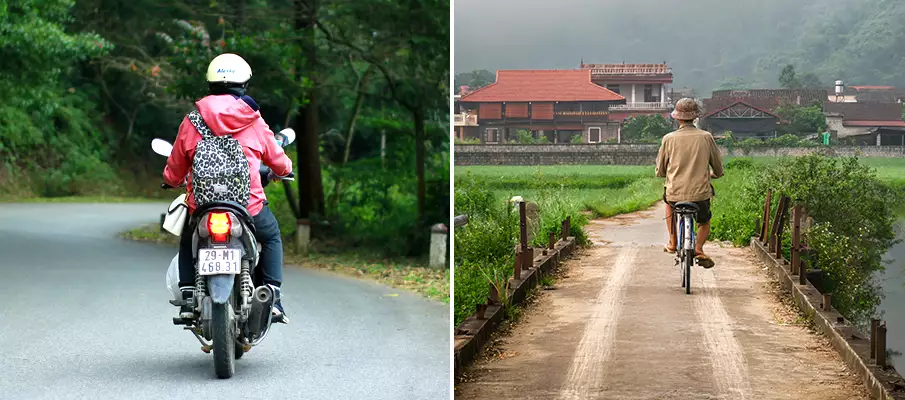
Food and Cuisine in Bac Son Valley / Lang Son:
Food and cuisine in Bac Son Valley offer a delectable journey into the heart of Vietnamese rural gastronomy. Traditional Tay and ethnic minority culinary traditions, combined with fresh, locally sourced ingredients, make for a unique and unforgettable dining experience. Here’s a glimpse of the food and cuisine you can savor in Bac Son Valley:
-
- Com Lam (Bamboo Rice): Com Lam is a local specialty of Bac Son Valley. Sticky rice, often mixed with beans and spices, is cooked inside bamboo tubes. The result is a fragrant, slightly smoky, and uniquely flavored dish. Com Lam is a popular snack for both locals and tourists.
- Grilled Fish: Bac Son Valley is surrounded by lush, clearwater rivers that are teeming with fish. Grilled fish, seasoned with local herbs and spices, is a favorite dish. It is often served with fresh vegetables, herbs, and rice paper, allowing diners to make their own spring rolls.
- Wild Vegetables and Herbs: The valley’s pristine environment yields an abundance of wild vegetables and herbs. Locals forage for these fresh, flavorful greens, which are used in a variety of dishes. These greens add a unique taste to salads, soups, and stir-fries.
- Freshwater Seafood: The rivers in Bac Son Valley are not only a source of fish but also prawns, crabs, and snails. Seafood lovers can enjoy a wide range of dishes, including prawn soup, crab stir-fry, and snail hotpot.
- Traditional Tay Dishes: Homestays in Bac Son Valley often serve traditional Tay dishes, allowing visitors to savor the flavors of the region. Common dishes include thang co (a sour soup made from horse meat), xoi (sticky rice), and grilled pork with lemongrass.
- Local Fruits: The valley’s climate is conducive to the cultivation of various fruits. You can indulge in fresh, ripe fruit such as lychee, plum, peach, and longan, depending on the season. These fruits are not only delicious but also make for excellent refreshments during your explorations.
- Vietnamese Coffee and Tea: The locals of Bac Son Valley are known for their coffee and tea culture. Enjoy a steaming cup of Vietnamese coffee or sip on fragrant herbal teas, which are often brewed from locally grown herbs. These beverages make for perfect companions as you relax in the serene surroundings.
- Homemade Rice Wine: Traditional homemade rice wine is a part of the local culture. Visitors can have the opportunity to taste this potent drink while engaging in conversations and cultural exchanges with the residents.
While Bac Son Valley may not have the bustling culinary scene of a city, it more than makes up for it with its authentic and locally sourced ingredients. Many homestays in the area offer the chance to enjoy home-cooked meals prepared by Tay families, giving you an authentic taste of the valley’s food culture.
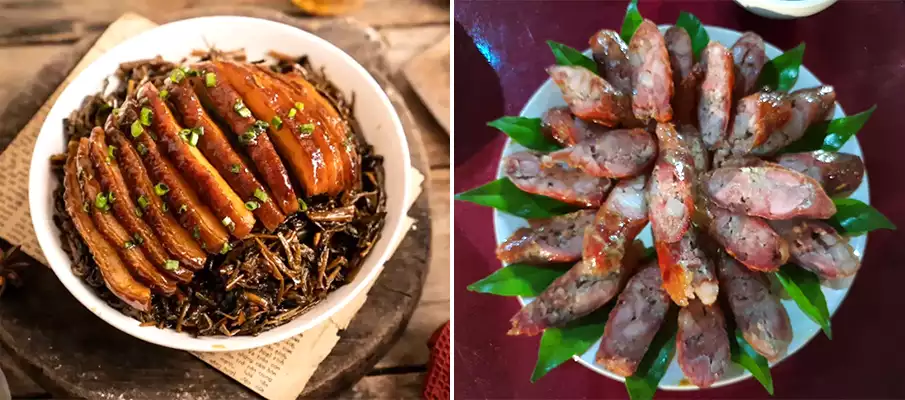
Why to visit or not to visit Bac Son Valley?
Visiting Bac Son Valley is a decision that depends on your travel preferences and what you seek in a destination. If you are traveling to Lang Son town, you should definitely visit this beautiful place. Here are reasons why you might want to visit or not visit Bac Son Valley:
👉 Reasons to Visit Bac Son Valley:
-
- Spectacular Natural Beauty: Bac Son Valley is renowned for its stunning landscapes, with lush rice terraces, karst limestone formations, and meandering rivers. If you’re a nature enthusiast and appreciate picturesque scenery, this valley is a must-visit destination.
- Cultural Immersion: Bac Son Valley offers a unique opportunity to immerse yourself in the culture of the Tay ethnic group. You can stay in traditional stilt houses, partake in local activities, and interact with the friendly locals, providing a rich cultural experience.
- Tranquility and Serenity: If you’re seeking a peaceful escape from the hustle and bustle of city life, Bac Son Valley’s tranquil surroundings and idyllic landscapes offer the perfect setting for relaxation and rejuvenation.
- Photography Paradise: The valley’s ever-changing light and dramatic scenery make it a paradise for photography enthusiasts. Whether you’re a professional photographer or just enjoy capturing beautiful moments, Bac Son Valley provides endless opportunities for striking shots.
- Outdoor Activities: Bac Son Valley is an excellent destination for outdoor enthusiasts. You can explore hiking trails, go cycling, and engage in various activities like visiting local markets and participating in traditional rice farming.
- Historical Significance: The valley has a rich historical background, with ties to the Tay Son Rebellion and the struggle against French colonial rule. If you’re interested in history, visiting Bac Son Valley can provide insights into Vietnam’s past.
👉 Reasons Not to Visit Bac Son Valley:
-
- Remote Location: Bac Son Valley is relatively remote and may require some effort to reach. If you prefer easily accessible tourist destinations with extensive amenities, Bac Son Valley might not be the best choice.
- Limited Urban Amenities: The valley’s accommodations and amenities are more rustic compared to major cities. While this adds to the charm for some travelers, it may not be ideal for those seeking luxury accommodations and urban conveniences.
- Weather Variability: The weather in Bac Son Valley can be unpredictable, with distinct seasons. It’s essential to plan your visit during a season that suits your preferences, as conditions can vary from hot and humid to cool and misty.
- Language Barrier: While many people in the tourism industry can communicate in English, English proficiency may be limited in more remote areas. Learning a few basic Vietnamese phrases can be helpful for communication.
- Lack of Nightlife: If you’re looking for a vibrant nightlife scene with bars, clubs, and entertainment options, Bac Son Valley may not be the ideal destination. Evenings in the valley are typically quiet and serene.
Ultimately, whether or not to visit Bac Son Valley depends on your interests and what you’re seeking in a travel experience. If you appreciate natural beauty, cultural immersion, and a tranquil escape from the city, Bac Son Valley is a hidden gem worth exploring. But it is better to arang your own transport in this area.
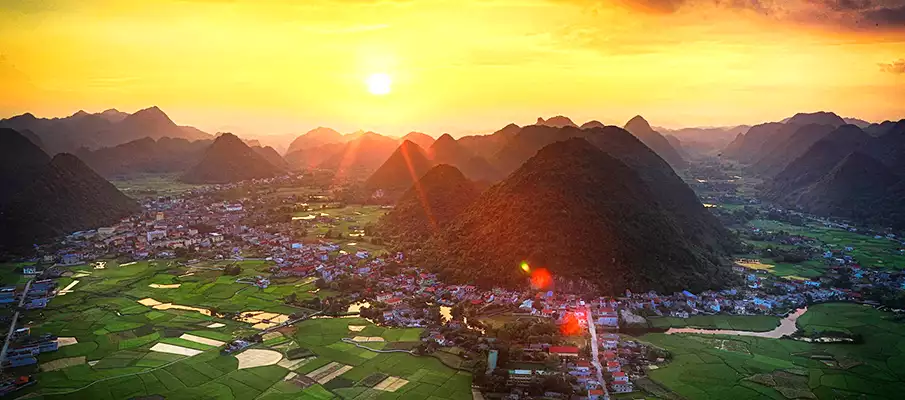
🚍 How to get and travel to Bac Son Valley?
Traveling to Bac Son Valley, a picturesque destination in northern Vietnam, typically involves a journey from Hanoi, the capital city. Here’s a step-by-step guide on how to get to Bac Son Valley:
1. International Arrival:
-
- If you’re arriving internationally, your journey will likely begin at Noi Bai International Airport (HAN) in Hanoi. This airport serves as the main gateway to northern Vietnam.
2. Travel to Hanoi:
-
- Upon arriving in Hanoi, if you’re not already in the city, you can take a taxi or use ride-sharing services to reach Hanoi’s city center.
3. Travel to Bac Son Valley (or Lang Son town):
-
- Option 1: By Private Vehicle: The most convenient way to get to Bac Son Valley is by arranging private transportation. This can be organized through your accommodation, a tour operator, or by hiring a car or van in Hanoi. The journey takes approximately 3-4 hours, depending on traffic and road conditions. It’s a comfortable and efficient option.
- Option 2: By Bus: Take a bus from Hanoi to Bac Son. You can catch a bus from My Dinh Bus Station or Gia Lam Bus Station in Hanoi, which has services going to Bac Son. The journey takes longer than a private vehicle, and you may need to transfer or change buses along the way. Ensure you check the bus schedule and availability in advance.
- Option 3: By Train: Take a train from Hanoi to nearby Lang Son or Bac Giang or Thai Nguyen, and then continue your journey to Bac Son Valley by local bus or taxi. The train journey provides scenic views of the countryside. Trains typically run to Lang Son or Bac Giang, where you can make onward arrangements.
- Option 4: Combination of Train and Bus: You can also combine train and bus travel. Take a train to Lang Son or Bac Giang and then transfer to a bus that will take you to Bac Son Valley. This combination allows you to enjoy the train ride and complete the journey by road.
- Book and buy tickets from Hanoi to Lang Son online on Baolau ➜ or 12go.asia ➜
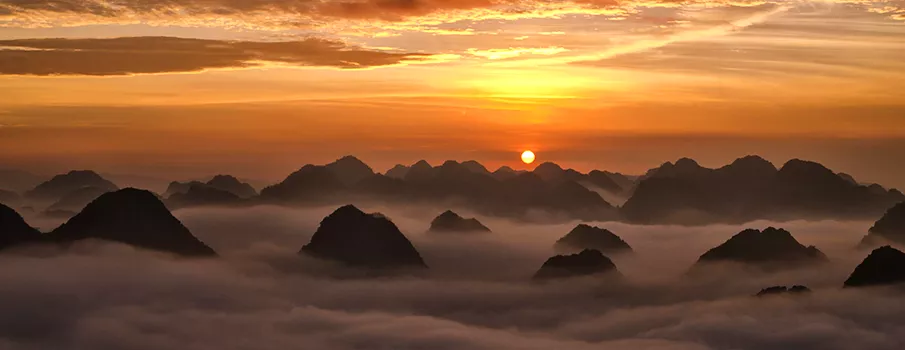
☀️ Weather in Bac Son Valley + The Best Time to Visit:
Bac Son Valley, located in the northern part of Vietnam, experiences a subtropical climate with distinct seasons. The weather in the valley can vary significantly throughout the year, and it’s essential to consider the climate when planning your visit. Here’s a breakdown of the weather in Bac Son Valley by season:
-
- Spring (February to April): Spring is a beautiful time to visit Bac Son Valley. The weather is typically mild and comfortable, with temperatures ranging from 15°C to 25°C (59°F to 77°F). The valley is lush and green, and the rice paddies are beginning to show their vibrant colors. It’s an ideal time for outdoor activities and photography.
- Summer (May to August): Summer in Bac Son Valley can be warm and humid. Temperatures can reach highs of 32°C (90°F) or more. This period is also the rainy season, with occasional heavy showers. The rice fields are in full growth during this time, presenting a lush, green landscape. However, be prepared for occasional rain and humidity if you visit during the summer months.
- Autumn (September to November): Autumn is another excellent time to visit Bac Son Valley. The weather is cooler and more comfortable, with temperatures ranging from 18°C to 28°C (64°F to 82°F). The rice fields start turning golden in preparation for harvest. This season is ideal for hiking and outdoor activities.
- Winter (December to January): Winter in Bac Son Valley can be chilly, with temperatures dropping to around 10°C (50°F) or lower at night. While the landscape is not as vibrant as in other seasons, the valley still has a unique charm. If you enjoy cool weather and don’t mind bundling up, you can visit during this time.
The Best Time to Visit Bac Son Valley:
The best time to visit Bac Son Valley largely depends on your preferences and what you want to experience:
-
- Rice Harvest Season (July to August): If you’re a photography enthusiast and want to witness the iconic golden rice fields in their full glory, visit during the rice harvest season in July and August. The landscapes are incredibly photogenic, and you can capture the valley’s beauty at its peak.
- Spring and Autumn (February to April and September to November): For comfortable weather, ideal for outdoor activities, and a balance between lush greenery and golden fields, consider visiting during the spring and autumn months. These seasons offer pleasant temperatures and are great for hiking and cultural exploration.
- Avoiding the Rainy Season: While the summer months offer vibrant green landscapes, it’s advisable to be prepared for rain if you visit during this period. If you prefer to avoid wet conditions, it’s best to plan your trip for the drier months of spring, autumn, or winter.
JanuaryCool and DryJanuary in Bac Son Valley is characterized by cool and dry conditions. The temperatures are relatively low, with average highs around 19°C (66°F) and cooler evenings. This is the dry season in Bac Son Valley, offering crisp, clear days. It’s an excellent time for outdoor activities, with comfortable weather for exploring the valley’s rice fields, trekking, and taking in the stunning scenery.
| Month | Weather | Description |
|---|---|---|
| January | Cool and Dry | January in Lang Son is characterized by cool and dry conditions. The temperatures are relatively low, with average highs around 18°C (64°F) and cooler evenings. This is the dry season, offering crisp, clear days. It’s an excellent time for outdoor activities, with comfortable weather for exploring the province’s landscapes, trekking, and taking in the stunning scenery. |
| February | Cool and Dry | February continues to be cool and dry, with temperatures remaining similar to January. As the dry season continues, February is an ideal time to visit Lang Son. The landscape is vibrant, with lush greenery, and the cool weather is perfect for hiking and photography. |
| March | Mild and Dry | March marks the transition to milder temperatures. Highs reach around 20°C to 25°C, and the weather remains dry. It’s an excellent time for sightseeing and enjoying the province’s landscapes. The lush greenery starts to return, making it an ideal time for nature enthusiasts. |
| April | Warm and Dry | April brings warmer temperatures to Lang Son, with average highs between 25°C and 30°C. Rainfall remains minimal, making it a great time for outdoor adventures and exploring the picturesque landscapes. The natural beauty of Lang Son is at its best during this period. |
| May | Warm and Dry | May continues the warm and dry conditions, with pleasant temperatures for outdoor exploration. The province’s landscapes and rural life are captivating. It’s a perfect time for hiking, cycling, and taking in the scenic beauty. |
| June | Hot and Humid | June marks the beginning of the hot and humid summer season in Lang Son. Highs can exceed 30°C, and there’s an increased chance of afternoon showers and thunderstorms. The province is alive with the vibrant green of rice fields, and it’s a bustling time for agriculture. |
| July | Hot and Humid | July is characterized by hot and humid weather. Afternoon rain showers and occasional thunderstorms are common, providing relief from the heat. The province’s activities and agriculture are in full swing, with farmers busy tending to their crops. |
| August | Hot and Humid | August continues the hot and humid conditions, making it a popular time for outdoor activities. Despite occasional rain showers, it’s a vibrant and lively time in Lang Son. The fields are lush, and local markets are bustling. |
| September | Moderate and Pleasant | September brings a transition to more moderate temperatures and decreasing humidity. Highs are around 25°C to 30°C, and it’s an ideal time for hiking and exploring the landscapes as nature rejuvenates after the rains. |
| October | Mild and Pleasant | October offers mild and pleasant weather in Lang Son. Highs range from 20°C to 25°C, and the weather is generally dry. The province’s natural beauty is on full display, making it a great time for outdoor activities and exploring the culture. |
| November | Cool and Dry | November is cooler and drier, making it a good time for those seeking tranquility. Highs are around 20°C to 25°C, and rainfall is minimal. The landscapes are green and inviting for outdoor adventures and cultural experiences. |
| December | Cool and Dry | December is one of the cooler and drier months in Lang Son. The average high temperature is around 18°C, and the nights can be cooler. Rainfall is minimal, and the province’s landscapes and rural life are serene, providing an excellent opportunity for exploration and cultural encounters. |
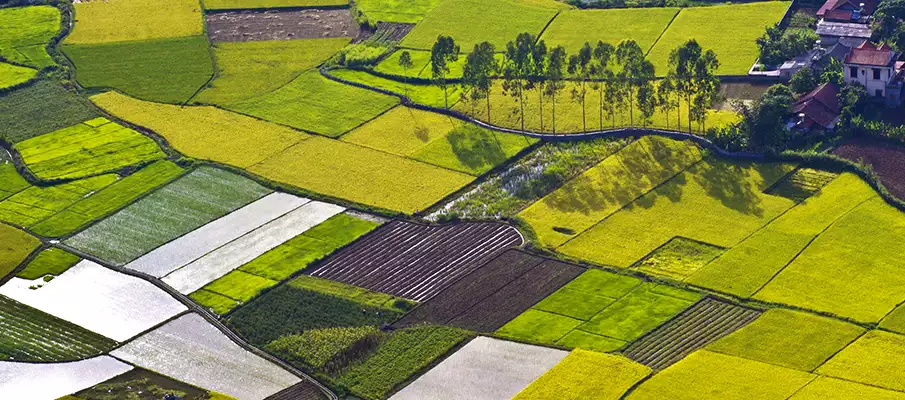
🏡 Accommodation in Bac Son Valley / Where to Stay:
Accommodation options in Bac Son Valley cater to a range of preferences, from rustic homestays that immerse you in the local culture to more comfortable lodges that offer modern amenities. Here are some of the accommodation choices you can consider when visiting Bac Son Valley:
-
- Homestays: Staying with local families in traditional stilt houses is one of the most authentic ways to experience Bac Son Valley. These homestays offer a unique opportunity to interact with the Tay people, learn about their culture, and enjoy home-cooked meals. Basic amenities are provided, including sleeping mats, mosquito nets, and shared bathroom facilities. Homestays often organize activities like rice planting and harvesting, making for a memorable and educational experience. You can try these options: Dương Công Chích Homestay, Bac Son Hometsay, Dương Công Cồ – Bắc Sơn Homestay, Trọng Dung Homestay Bắc Sơn
- Eco-Lodges: Several eco-lodges have sprung up in Bac Son Valley, offering a comfortable yet environmentally conscious stay. These lodges blend modern amenities with eco-friendly practices, and they often have stunning views of the surrounding landscapes. You can expect private rooms, attached bathrooms, and various services to enhance your experience.
- Guesthouses (Nhà Nghỉ): Guesthouses or Nhà Nghỉ in Bac Son Valley provide a balance between local hospitality and comfort. They offer private rooms with attached bathrooms and basic amenities. Some guesthouses may also have on-site restaurants. It’s essential to check the specific facilities and services offered by each guesthouse, as they can vary. You can try these options: Nhà Nghỉ Anh Đào, Nhà Nghỉ Bình Hương 2
- Hotels: While Bac Son Valley is primarily a rural destination, you can find some hotels in Lang Son town. These hotels typically provide standard amenities, including comfortable rooms, private bathrooms, and dining options. If you prefer a more urban-style accommodation experience, this might be your best option.
- Agritourism Stays: Some local farmers and homestay hosts offer agritourism experiences, where you can participate in farming activities, such as rice planting, fishing, and vegetable harvesting. You can stay in basic accommodations on the farm, gaining a deeper understanding of the agricultural way of life.
- Hostels: Although less common than other accommodation types, you can find hostels in the area that offer budget-friendly dormitory-style rooms. Hostels are ideal for backpackers and solo travelers looking for affordable lodging options. There are some typical hostels in Lang Son town.
➜ Accommodation in Vietnam – Book Here
🔍 Interesting Places + Activities in Bac Son Valley:
-
- Bac Son Rice Fields: The emerald-green rice paddies that stretch as far as the eye can see are a visual masterpiece. Exploring the Bac Son rice fields during the harvest season, which typically falls in July and August, offers an opportunity to witness the local farming culture and take stunning photographs.
- Na Lay Peak (Đỉnh Nà Lay): Hiking to the summit of Mount Na Lay is a rewarding adventure. The trail winds through forests, limestone formations, and terraced fields, culminating in breathtaking panoramic views of Bac Son Valley. The sunrise and sunset views from the peak are particularly enchanting.
- Bac Son Uprising Museum: This museum is dedicated to preserving and showcasing the history and artifacts related to the Tay Son Uprising, which was a significant historical event in Vietnam during the late 18th century. The Tay Son Uprising, led by the three Tay Son brothers Nguyen Nhac, Nguyen Hue (also known as Emperor Quang Trung), and Nguyen Lu, was a major rebellion against the ruling Le Dynasty and the Nguyen Lords in Vietnam.
- Relic of Bac Son Rebellion: The Relic of Bac Son Rebellion, often referred to as the „Khu di tich Bac Son,“ is a historical site in Bac Son Valley, Lang Son Province, Vietnam. It holds significant historical and cultural importance as it is connected to the Tay Son Rebellion, one of the major uprisings in Vietnamese history during the late 18th century.
- Bac Son Market: The weekly Bac Son Market is a vibrant hub of activity where you can immerse yourself in the local culture. Here, you can observe the diverse ethnic groups in the region, see traditional handicrafts, and sample local street food. The market provides an excellent opportunity for cultural exchange.
- Tay Villages: Wander through the charming Tay ethnic villages nestled in the valley. Visiting these traditional stilt houses, interacting with the locals, and experiencing their way of life offers an authentic cultural experience. You can partake in activities like rice planting and weaving with the villagers.
- Local Temples and Pagodas: Bac Son Valley is home to a number of ancient temples and pagodas that are not only culturally significant but also architecturally beautiful. Explore places like Tay Son Pagoda and Thanh Minh Pagoda to learn about the spiritual history of the region.
- Outdoor Activities: Bac Son Valley is an outdoor enthusiast’s paradise. You can trek along well-marked trails that lead to remote villages and viewpoints, take a leisurely bike ride through the valley, or go fishing in the pristine rivers. The valley’s natural beauty is best explored by being active in the great outdoors.
- Photography Expeditions: The ever-changing light and stunning landscapes make Bac Son Valley a paradise for photographers. Capture the vibrant rice fields, limestone karsts, and the daily life of the locals. Photography workshops and tours are also available for enthusiasts looking to hone their skills.
- Tay Son Caves: Explore the Tay Son Caves, which have historical significance dating back to the Tay Son Rebellion against the Le Dynasty and French colonial rule. The caves served as hiding places for revolutionaries and offer insights into the region’s history.
- Relaxation and Tranquility: Sometimes the most rewarding activity in Bac Son Valley is simply relaxing. Whether you’re reading a book while enjoying the serene surroundings, sipping on local tea, or unwinding at your accommodation, the valley’s tranquility is a treasure in itself.
- Homestay Experiences: Opt for a homestay with a local family to immerse yourself in the heart of the valley’s culture. Participate in daily activities, share meals, and learn about the Tay way of life, forging connections that transcend language barriers.
- Tiên Nữ Waterfall (Thác Tiên Nữ): This waterfall is about 15 km from Bac Son Valley.
📍 Bac Son Valley in Lang Son — Google Map:
❓ Frequently Asked Questions about Bac Son Valley:
1. How to book tickets from Hanoi to Lang Son?
2. Where is Bac Son Valley located?
-
- Bac Son Valley is situated in the Lang Son Province of Northern Vietnam. It’s nestled in the picturesque district of Bac Son, approximately 160 kilometers (99 miles) from Hanoi, the capital city. It is about 80 km west of Lang Son town.
3. What is the best time to visit Bac Son Valley?
-
- The best time to visit Bac Son Valley is during the rice harvesting season, which typically falls between July and August. During this period, the valley is adorned with lush, golden rice fields, creating a stunning and serene landscape.
4. What are the main attractions in Bac Son Valley?
-
- Bac Son Valley is renowned for its stunning terraced rice fields, which are the primary attraction. Other highlights include the traditional stilt houses, rolling hills, and the friendly local ethnic minority communities. You can also climb Na Lay Peak for amazing views to the valley.
5. How can I get to Bac Son Valley from Hanoi?
-
- There should be some buses from My Dinh or Gia Lam Bus Stations in Hanoi. But you can also travel by bu or train from Hanoi to Lang Son Province and then transferring to a local bus or taxi to the valley. The journey offers scenic views of the Vietnamese countryside.
6. Are there hiking or trekking opportunities in Bac Son Valley?
-
- Yes, Bac Son Valley offers fantastic hiking and trekking opportunities. You can explore the surrounding hills and terraced fields on foot, providing a close-up experience of the valley’s natural beauty.
7. What is the cultural experience like in Bac Son Valley?
-
- Bac Son Valley is inhabited by the Tay ethnic minority, and a visit here provides a unique opportunity to experience their traditional culture, including homestays in stilt houses, learning about local customs, and enjoying their cuisine.
8. Do I need a guide to explore Bac Son Valley?
-
- While it’s not mandatory to have a guide, having one can enhance your experience by providing insights into the local culture, guiding you on the best hiking routes, and helping with language barriers.
9. Is there any homestay accommodation available in Bac Son Valley?
-
- Yes, several homestays in Bac Son Valley offer authentic and immersive experiences with the local community. It’s an excellent way to connect with the Tay people and enjoy traditional Vietnamese hospitality. In Bac Son town you can also use some cheap guesthouses.
10. What should I pack for a trip to Bac Son Valley?
-
- Pack comfortable clothing for hiking, insect repellent, a rain jacket (in case of unexpected showers), sturdy footwear, and a camera to capture the stunning scenery.
11. Is it possible to capture great photographs in Bac Son Valley?
-
- Yes, Bac Son Valley is a photographer’s paradise, especially during the rice harvesting season. The landscape, with its terraced rice fields and dramatic hills, offers numerous opportunities for capturing breathtaking images.
12. Are there any local markets in Bac Son Valley?
-
- While Bac Son Valley is primarily an agricultural area, you can find small local markets where you can purchase traditional handicrafts, locally produced goods, and souvenirs. It’s a great way to support the local economy and take home mementos of your visit.
13. How to explore Bac Son District and Bac Son Valley?
-
- In Bac Son Valley you can easily walk or hike. But the best way how to explore the whole district of Bac Son is to travel on motorbike / scooter, teoretically you can rent a motorbike or scooter in your homestay, ask for this option on site.
14. How to travel solo in Vietnam, what to expect?
-
- Embarking on a solo adventure in Vietnam involves securing the necessary visa, meticulous budgeting for accommodation, meals, and activities, prioritizing health with vaccinations and a well-equipped first aid kit, familiarizing yourself with basic Vietnamese phrases for effective communication, and staying connected through translation apps to navigate the diverse landscapes and vibrant culture seamlessly.
15. What are the most interesting things or facts about Vietnam?
-
- Vietnam, a country with a captivating allure, is celebrated for its breathtaking landscapes, including the mesmerizing limestone karsts of Halong Bay, the terraced rice fields of Sapa, and the bustling waterways of the Mekong Delta. Its rich history unfolds through ancient temples in Hanoi, the imperial city of Hue, and the Cu Chi Tunnels, providing a glimpse into Vietnam’s resilience during wartime. The country’s vibrant culture, delicious cuisine, and warm hospitality further enhance the allure of this Southeast Asian gem. Read this: 15 Interesting Things of Vietnam.
16. What to expect from Vietnam Culture?
-
- Expect a vibrant cultural tapestry in Vietnam, characterized by traditional values, a strong sense of community, and a deep-rooted respect for family. You’ll encounter a fusion of French, Chinese, and indigenous influences in art, architecture, and cuisine. Traditional water puppetry, folk music, and dance performances showcase the country’s artistic flair. The importance of rituals and festivals in daily life adds a colorful dimension, while the warmth and friendliness of the Vietnamese people make for a welcoming and enriching cultural experience.
BOOK A TOUR / ACTIVITY in Vietnam ➜
| Facts about Bac Son Valley in Lang Son: | Description |
|---|---|
| 1. A Verdant Paradise | Bac Son Valley is a lush, green paradise nestled in the northern part of Vietnam. The valley is surrounded by towering karst limestone mountains and covered in verdant rice paddies. It offers a picturesque and tranquil environment, making it a favorite destination for nature enthusiasts and photographers. |
| 2. Ethnic Diversity | The valley is home to several ethnic minority communities, including the Tay and Nung people. These communities have retained their unique customs, traditional clothing, and way of life, providing visitors with a rich cultural experience. You can learn about their ancient traditions and witness their daily routines. |
| 3. The Magnificent Na Lay Peak | One of the highlights of Bac Son Valley is the striking Na Lay Peak. This limestone mountain stands tall amidst the valley’s rice fields and provides a breathtaking panoramic view of the entire region. Climbing to the peak is a challenging but rewarding adventure for hikers and photographers, especially during sunrise or sunset. |
| 4. A Photographer’s Dream | Bac Son Valley is often referred to as a photographer’s dream. The ever-changing landscape, from the vibrant green rice terraces during the growing season to the golden hues of harvest time, offers endless opportunities for capturing stunning photographs. The valley is a favorite spot for both professional and amateur photographers. |
| 5. The Historic Bao Thang Pagoda | In the heart of Bac Son Valley lies the historic Bao Thang Pagoda, a serene Buddhist temple with roots dating back centuries. The pagoda is a place of spirituality and reflection, and its architecture showcases a blend of traditional Vietnamese and unique regional styles. Visitors can explore the temple’s grounds and absorb its tranquil ambiance. |
| 6. Preserving Tradition | The residents of Bac Son Valley are dedicated to preserving their cultural heritage. Traditional farming methods, handmade crafts, and rituals have been passed down through generations. Visitors have the opportunity to witness these customs, such as rice planting and harvesting, as well as traditional music and dance performances. |
| 7. Birdwatching Haven | The valley’s diverse ecosystem and proximity to the Na Lay Mountain Nature Reserve make it a haven for birdwatchers. Bird species such as white-winged magpies, red-collared doves, and oriental pied hornbills can be spotted in the area. Birdwatching enthusiasts can explore the valley’s trails and forests in search of these beautiful creatures. |
| 8. Historical Significance | Bac Son Valley has historical importance as a site where the local Tay ethnic group resisted French colonial rule during the early 20th century. Visitors can learn about this period of resistance and visit historical landmarks that commemorate the struggle for independence. |
| 9. Traditional Stilt Houses | Traditional stilt houses are a common sight in Bac Son Valley, serving as the primary form of housing for the Tay and Nung communities. These unique structures are not only functional but also rich in cultural significance. Staying in a stilt house is a remarkable experience that allows you to immerse in local traditions and hospitality. |
| 10. Eco-Tourism Initiatives | Bac Son Valley is increasingly recognized for its eco-tourism initiatives. The local community and authorities are working together to promote sustainable tourism that respects the environment and benefits the residents. Visitors are encouraged to support these efforts and leave a positive impact on this pristine valley. |
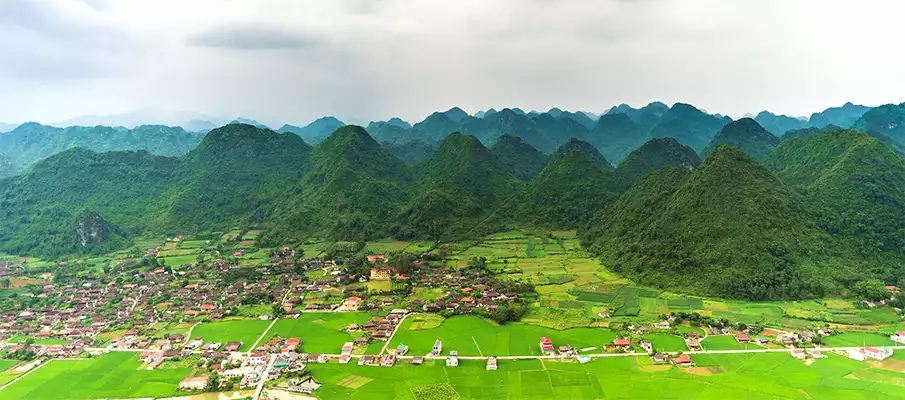
Floating Markets in Vietnam|Cat Ba – Travel Guide|Islands in Vietnam|Beaches in Southern Vietnam|Beaches in Central Vietnam|Con Dao – Guide
